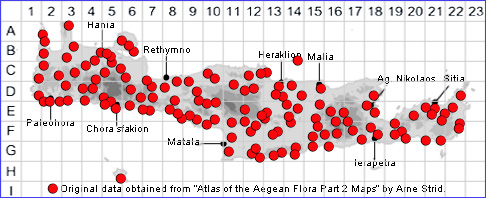SPECIES DESCRIPTION
SATUREJA THYMBRA
Family and Genus:- See- LABIATAE
Common Names:- Satureja
Homotypic Synonyms:- Clinopodium thymbra, Micromeria thymbra.
Meaning:- Satureja (L) A name used by the Roman naturalist and philosopher
Pliny for a culinary herb, from the Arabic, sattur, meaning savory.
Thymbra (L) A name used by the Roman naturalist and philosopher
Pliny, for a savoury, thyme-like plant.
General description:- An aromatic, thyme-like dwarf shrub, much-branched and
grey with hairs.
Stems:-
1) To 35 cm tall.
Leaves:-
1) 9-14 mm, linear to narrowly obovate, acute, scabrid, gland-dotted.
Flowers:-
1) Verticillasters, many-flowered, dense, subglobose, distinctly separated;
2) Floral leaves, equalling verticillasters.
3) Bracts, equalling the verticillasters;
a) bracteoles, conspicuous, acuminate, ± equalling the calyx.
4) Calyx, 4-7 mm, with long, patent, white hairs, regular, pilose;
a) teeth, acute or acuminate. slightly shorter than the tube.
5) Corolla, 8-12 mm, usually rose-pink.
Fruit:-
1) Achenes, 4.
Key features:-
1) Calyx-teeth, acute or acuminate.
2) Bracteoles, conspicuous, acuminate, ± equalling the calyx
Habitat:- A common constituent of open dry shrubby vegetation, sometimes in
open woodland and olive groves. 0-1900.
Distribution:- Sardinia, Balkans, Crete and the E Mediterranean, including Cyprus.
Widespread and common on Crete.
Flowering time:- Apr-June and occasionally at other times
Photos by:- Steve Lenton

